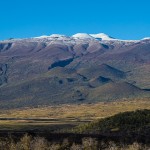A great deal of mythology swirls about our mountain. Some of it may be true, much is probably not as wishful thinking and reality collide on the summit. The current debates have moved every little detail into the light.

I had my doubts about this. Whenever these questions arise it is important to check the records. Fortunately this has already been completed for us… Norbert Schorghofer, Elianna Kantar, and M. Puakea Nogelmeier at the University of Hawaii combed through the historical records looking for observations of the presence of snow atop Mauna Kea. What they found is that there were any number of records indicating the lack of snow on the mountain.
Follow the link and read the paper, it is a fascinating view into the past of Mauna Kea. Included are excerpts from ships logs and diaries of early visitors to the islands. At the end is a convenient timeline of the accounts covering the first century of written records and a set of three conclusions drawn from this information. The author’s conclusion is clear, Mauna Kea has not featured permanent snow cover any time in the last few centuries.
There was a time when the mountain featured permanent snow and ice fields. During the last ice age, around 12,000-11,000 years ago, there was permanent ice and active glaciers in the summit region. Along the access road there are textbook glacial features to be seen, glacial polish and moraines. This was gone before humans arrived in the islands. What we see today was probably much as it was over the past few centuries, as borne out in the records of the first European voyagers to make it to the islands. Snow may have been more common, but there were certainly periods when no snow was to be seen atop the summit of Mauna Kea.
These historical accounts date from long before human activities had begun dumping vast quantities of carbon dioxide into the atmosphere. We do face an uncertain climate future, warming temperatures may reduce snowfall. The opposite may also be possible, warmer sea surface temperatures may create more precipitation at the summit with heavier snowfall events possible.

